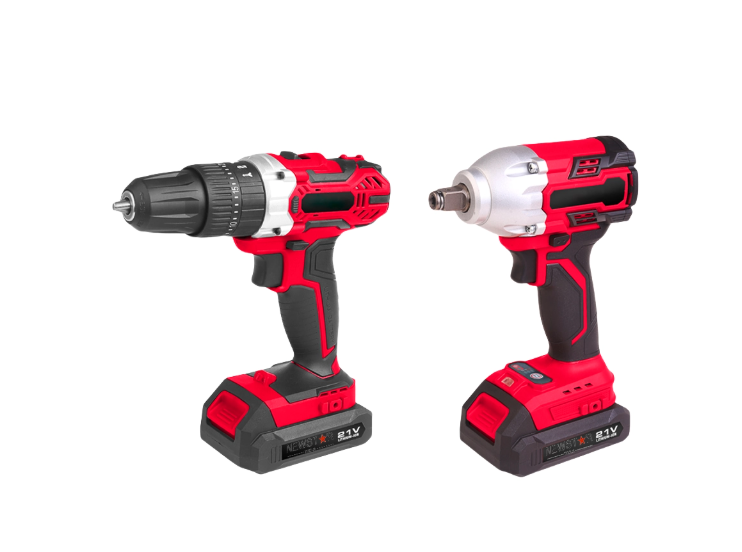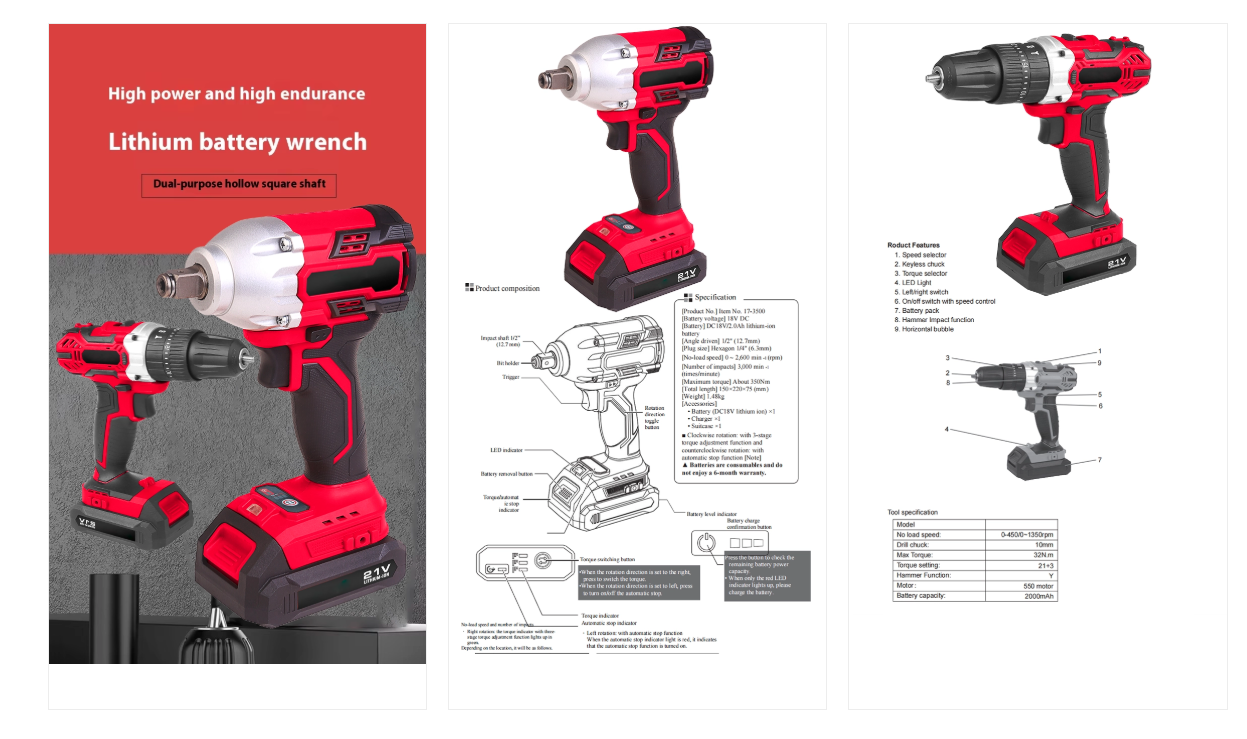Power tools have revolutionized the way we work, making construction, DIY projects, and industrial tasks faster and more efficient. However, the increased power and speed of modern tools also bring a higher risk of injuries. According to the Consumer Product Safety Commission (CPSC), over one million people are injured annually using hand tools and power tools, resulting in millions of dollars in medical costs and lost productivity. Many of these injuries are preventable with proper safety awareness and adherence to best practices.
This article provides a comprehensive guide on common power tool safety hazards and prevention tips, covering hand tools, electric tools, pneumatic tools, and powered abrasive wheel tools. Whether you are a professional or a DIY enthusiast, understanding these hazards and learning how to prevent accidents is essential to maintaining a safe working environment.
Why Power Tool Safety is Critical
Power tools and hand tools are indispensable in many workplaces, but their improper use can result in serious injuries, including cuts, electrical shocks, eye injuries, hearing loss, and even fatalities. OSHA reports that accidents involving hand tools and power tools are often caused by:
Misuse of tools or using tools for unintended purposes
Lack of maintenance or using damaged tools
Inadequate training or lack of awareness about hazards
Neglecting personal protective equipment (PPE)
Implementing proper safety measures not only protects employees but also reduces downtime, financial losses, and potential legal liabilities. Safety begins with education, awareness, and following established procedures.
![power tool power tool]()
Types of Common Power Tool Hazards
Electrical Hazards
Electric-powered tools are among the most serious hazards in any workplace. Improperly grounded tools, damaged cords, or worn insulation can easily result in electric shocks or burns, which in severe cases may lead to cardiac arrest or even death. Accidents are more likely to occur when tools are used in wet or damp conditions, or when circuits are overloaded, potentially causing fires or tool malfunctions.
Prevention Tips: To reduce the risk of electrical hazards, always use power tools that are double-insulated or equipped with a three-pronged grounded cord. Never operate electric tools in wet conditions unless they are specifically rated for such use. Installing ground fault circuit interrupters (GFCIs) is highly recommended to provide an additional layer of protection against electrical shock. Furthermore, regular inspections of cords, plugs, and outlets for wear, fraying, or other damage can prevent many accidents before they happen. Ensuring proper maintenance and safe handling of hand tools and power tools will dramatically reduce the risk of electrical injuries.
Mechanical Hazards
Both hand tools and power tools pose mechanical hazards that can lead to serious injuries. Sharp blades, spinning parts, and heavy moving components can cause cuts, punctures, or lacerations. Kickback from drills, saws, or grinders can throw tools unexpectedly, while malfunctioning or poorly maintained tools may pinch or crush fingers and other body parts. These hazards are often exacerbated when workers attempt to use tools in ways they were not intended or neglect proper safety precautions.
Prevention Tips: To prevent mechanical injuries, it is critical to use the right tool for the task at hand and avoid improvising with inappropriate tools. Regular maintenance of hand tools and power tools—including sharpening blades, tightening loose parts, and cleaning components—ensures proper operation and reduces the risk of accidents. Inspecting each tool carefully before use helps identify potential hazards such as cracked handles, bent wrenches, or worn-out moving parts. Following these simple steps can prevent many injuries that occur during day-to-day tool operations.
Flying Debris and Projectiles
High-speed tools, including grinders, circular saws, and pneumatic nail guns, can eject fragments of material or broken tool parts at extreme speeds. Even small particles can cause severe injuries, especially to the eyes and face, and may also harm nearby coworkers if adequate precautions are not taken. The hazards of flying debris are often underestimated, particularly when working in confined or cluttered areas.
Prevention Tips: Always wear proper eye and face protection, such as safety goggles or face shields, whenever operating high-speed power tools or tools that create debris. Safety guards, shields, and barriers should be installed and maintained on all tools capable of ejecting fragments. Additionally, keeping bystanders at a safe distance and maintaining a controlled work area minimizes the risk of unintended injuries. Employers should also provide training on handling tools that produce debris, ensuring all personnel understand the importance of protective equipment and safe workspace management.
Noise Hazards
Many power tools, especially pneumatic tools, grinders, and high-speed cutting equipment, generate significant noise that can contribute to permanent hearing loss over time. Prolonged exposure to high-decibel tools without protection can lead to tinnitus, stress, and other long-term auditory problems. Noise hazards are often overlooked compared to immediate physical dangers, yet their impact can be just as severe over the long term.
Prevention Tips: Workers should wear hearing protection such as earplugs or earmuffs whenever operating loud hand tools or power tools. Limiting exposure time, taking regular breaks, and rotating tasks among employees can further reduce the risk of hearing damage. Using vibration-dampening gloves and ergonomically designed tools can also reduce strain and fatigue, which helps maintain focus and prevent accidents caused by tired or distracted operators.
Improper Tool Use or Maintenance
Improper use or lack of maintenance is one of the leading causes of injuries related to both hand tools and power tools. For example, using a screwdriver as a chisel may cause the tip to break and fly off unexpectedly. Wooden handles on hammers, axes, or mallets can splinter, allowing the tool’s head to detach and cause injury. Similarly, impact tools with mushroomed heads, like chisels or wedges, can shatter on contact, sending sharp fragments in multiple directions. Even tools with sprung wrenches or loose components can slip, pinch, or snap, resulting in serious injuries.
Prevention Tips: Preventing accidents begins with thorough inspection and maintenance. All hand tools and power tools should be carefully examined before each use for signs of wear, damage, or loose components. Regular maintenance—including cleaning, sharpening, and replacing worn or broken parts—ensures tools perform safely and efficiently. Unsafe tools must be removed from service immediately, tagged, and reported to supervisors or certified foremen. Educating workers on the correct use of tools, combined with consistent maintenance, dramatically reduces the likelihood of injuries caused by improper tool use.
General Power Tool Safety Guidelines
Working safely with hand tools and power tools requires a combination of proper personal protective equipment, organized workspace practices, and consistent tool inspection and maintenance. Following these guidelines reduces the risk of injury and ensures a safer, more productive work environment.
Personal Protective Equipment (PPE)
Eye and Face Protection
Always wear safety goggles or a face shield when operating hand tools or power tools.
Use protective barriers or shields for tools that may eject material at high speed, such as grinders or pneumatic nail guns.
Hand and Body Protection
Wear gloves to protect against cuts, abrasions, and vibration—but avoid loose gloves near moving parts.
Wear long pants and long sleeves; remove jewelry and secure long hair to prevent entanglement.
Hearing and Respiratory Protection
Use earplugs or earmuffs when operating loud power tools to prevent hearing damage.
Wear dust masks or respirators when working with dust, fumes, or hazardous chemicals to safeguard your lungs.
Workplace Safety Practices
Clean and Organized Workspace
Keep floors clean, dry, and free from debris to prevent slips and falls.
Ensure proper lighting so operators can see tools and materials clearly.
Safe Zones and Bystander Awareness
Maintain enough space for safe operation, especially for large or high-speed tools.
Keep bystanders away; use barriers or screens when necessary.
Tool Storage and Organization
Store hand tools and power tools in designated racks, toolboxes, or cabinets.
Avoid leaving tools on elevated surfaces, such as scaffolds or ladders, where they could fall.
Tool Inspection and Maintenance
Pre-Use Inspections
Inspect all tools for cracks, frayed cords, loose parts, or other damage before each use.
Remove unsafe tools from service immediately and tag them clearly.
Maintenance Practices
Follow manufacturer instructions for cleaning, sharpening, and lubrication.
Keep blades sharp, parts clean, and moving components lubricated to prevent malfunctions.
Reporting and Tagging
Electric Power Tool Safety Tips
Use Certified Power Tools
Always select power tools that are NRTL-listed or certified by recognized safety laboratories. Certified tools are built to meet strict safety standards, reducing the risk of electrical hazards or malfunction during use.
Inspect Cords and Plugs
Before using electric hand tools or power tools, check cords, plugs, and switches for any signs of wear, fraying, or damage. Damaged cords can cause shocks or tool failure.
Avoid Carrying Tools by the Cord
Never carry a tool by its power cord or pull it out from an outlet. Doing so can damage the internal wiring and increase the risk of electrical shock.
Disconnect Before Maintenance
Always unplug tools when changing blades, bits, or performing maintenance. This prevents accidental starting, which can lead to serious injuries.
Maintain Good Footing and Balance
When operating electric power tools, ensure your stance is stable. Secure workpieces with clamps or vises to free both hands and maintain full control of the tool.
Safe Handling and Transport of Power Tools
Pass Tools Safely
When handing hand tools or power tools to another worker, always pass them with the handle facing the recipient. This prevents accidental cuts, punctures, or impact injuries.
Use Tool Belts or Hoists on Ladders
Never carry tools in your hands when climbing or descending ladders. Use a tool belt, bag, or hoist to safely transport equipment, keeping hands free for balance.
Avoid Carrying Pointed Tools in Pockets
Pointed tools such as chisels, knives, or screwdrivers should never be carried in clothing pockets. Use a toolbox, protective pouch, or tool belt to prevent injuries.
Do Not Leave Tools on Elevated Surfaces
Avoid leaving hand tools or power tools on scaffolds, platforms, or shelves where they could fall and injure someone below. Always return tools to their designated storage after use.
Frequently Asked Questions
Q: What are the most common power tool injuries?
A: Cuts, lacerations, burns, eye injuries, hearing loss, and electric shocks.
Q: How often should hand tools and power tools be inspected?
A: Before every use and regularly according to manufacturer recommendations.
Q: Can PPE fully prevent injuries from power tools?
A: PPE reduces risk but cannot replace proper training, tool maintenance, and safe operating procedures.
Q: How do I ensure a power tool is properly grounded?
A: Use tools with a three-pronged plug or double insulation, and always check for damaged cords or plugs.
Conclusion
Power tools and hand tools are indispensable in construction, manufacturing, and DIY projects, but they come with inherent risks that can cause serious injuries if safety precautions are ignored. By understanding common hazards—including electrical risks, mechanical injuries, flying debris, noise exposure, and improper tool use—and implementing preventative measures such as proper PPE, routine inspections, and safe handling practices, both professionals and hobbyists can significantly reduce the likelihood of accidents.
At Suzhou Newstar Hardware Co., Ltd., we are committed to providing high-quality hand tools and power tools designed with safety and reliability in mind. Our products undergo strict quality control, ensuring durability, efficiency, and compliance with industry safety standards. Whether you are equipping a professional workshop or completing home projects, choosing the right tools and following proper safety procedures is key to a productive and accident-free environment. Trust Suzhou Newstar Hardware Co., Ltd. for safe, dependable tools that help you work smarter and safer every day.

















